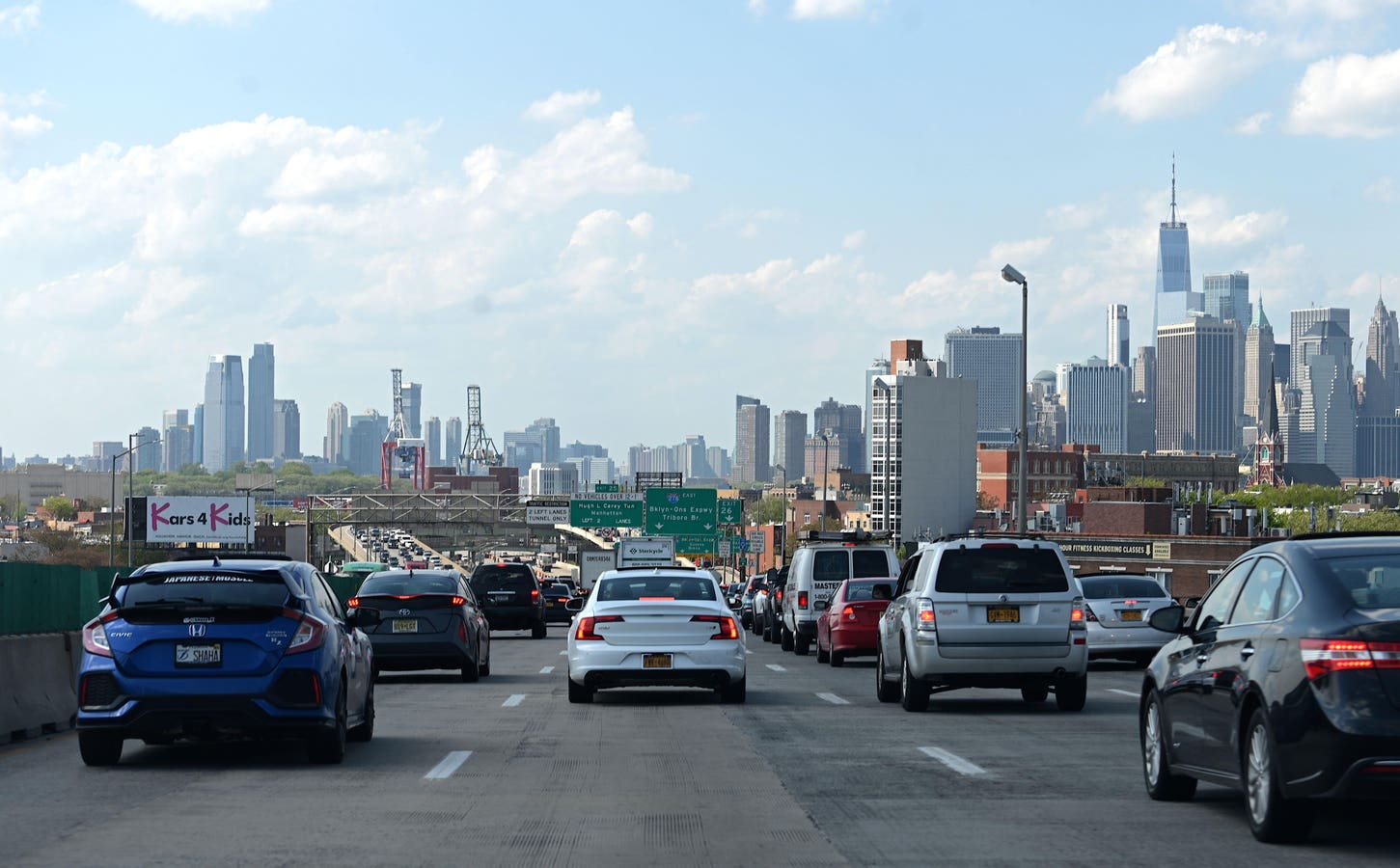The U.S. is an outlier among high-income countries when it comes to road safety, according to the World Health Organization.
AFP via Getty Images
There is some good news — a notable decrease in the number of people killed in crashes on the nation’s roads in the first three months of 2025. It is an estimated decline of about 6.3% compared to the same period in 2024. The drop represents the 12th consecutive quarterly decline in fatalities, and the lowest estimated quarterly fatality rate in six years.
But some 8,055 lives were still lost.
Those are the main highlights of new data released earlier this month by the National Highway Traffic Safety Administration (NHTSA).
“While traffic fatalities remain far too high, we are encouraged to see such a decline and pledge to continue working to drive down these numbers even more, ” Peter Simshauser, NHTSA’s chief counsel, said in a statement. “NHTSA will continue to use all of its resources to educate Americans about dangerous driving behaviors and advance meaningful policies that will save lives. The agency is also strengthening its relationships with law enforcement to ensure traffic laws are being enforced to save lives.”
Deaths decreased in 33 states, the District of Columbia and Puerto Rico, and increased in 17 states, according to the federal agency’s estimates.
While the recent news represents progress, road safety experts remain concerned.
“While this decline is welcome news, it is no time to celebrate,” Cathy Chase, president of Advocates for Highway and Auto Safety, said in a statement.
“Over 8,000 people are still projected to have died on U.S. roads in just three months. Without swift federal and state action, tens of thousands of people will continue to perish each year on American roadways while millions more are impacted by devastating injuries, emotional trauma and significant financial burdens.”
What Chase calls “the dire situation affecting every category of road user in this country” is particularly striking compared to the advances made in other countries.
The United States, once a leader in road safety, has for a number of years lagged behind many other high-income nations with its higher road death rate, according to many international organizations, including the International Transport Forum (ITF), a Paris-based intergovernmental organization with 69 member countries within the Organization for Economic Cooperation and Development.
The persistent trend is reflected in the ITF’s most recent Road Safety Annual Report 2024, where the U.S. is ranked near the bottom of assessed countries based on population, number of registered vehicles, and miles driven.
“Road deaths in the United States are very high, particularly for a country that has all the financial resources and knowledge to tackle the problem,” Etienne Krug, director of the Department of Social Determinants of Health at the World Health Organization (WHO), the lead road safety agency for the United Nations, told Forbes soon after its “Global status report on road safety 2023” was released.
The U.S. is an outlier among high-income countries, Dr. Krug said. “In fact, in terms of deaths per 100,000 population, the rates of deaths in the U.S are seven times higher than in Sweden, Switzerland and the United Kingdom, for example.
“I think there is a lack of political attention and political will. There’s probably also the fact that road safety is decentralized and every state has its own legislation and ways of enforcing it or not enforcing it. But it’s really something that deserves much more attention because this problem can be successfully addressed, as many high-income countries have shown. ”
The report showed that countries such as Denmark, Japan, Norway and the United Arab Emirates had at least a 50% reduction during the previous decade, as did upper-middle-income countries like Belarus and the Russian Federation.
“It’s essential to remind people, particularly those in the U.S. because it’s a very car-based transportation system, the importance of protecting pedestrians, cyclists, and other road users not protected by an enclosed vehicle,” Dr. Krug added.
“Also, more broadly, in the context of our desperate need to act on climate change and create a more sustainable world, a car-based transportation system is doomed to fail. Such passive transportation is unsafe and unhealthy, as it contributes not only to road deaths, but also to a sedentary lifestyle and to air pollution, which in turn contribute to disease. We need to promote healthier and cleaner alternatives, like walking, cycling and public transport.”
For more information, click here, here, and here.









